CCSD Curriculum Elements
Cobb County World Language Program courses are designed to assist the students' development of language and intercultural skills. Each course has set learning targets based on ACTFL's language proficiency standards and NCSSFL-ACTFL Can Do Statements. ACTFL standards goal areas are: Communication, Cultures, Connections, Comparisons, and Communities.
Communication
This is the main area of the standards and in which we based a great part of our course program. There are three modes within the communication standards, Interpersonal, Presentational, and Interpretive. Use the links below to learn more about the language domains and sublevels for each mode.
| MODES | |||||
| LEVELS | |||||
| Novice | 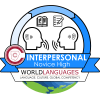 |
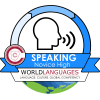 |
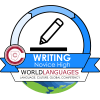 |
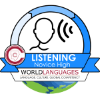 |
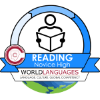 |
| Intermediate | 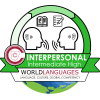 |
 |
 |
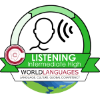 |
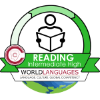 |
| Advanced | 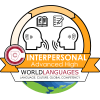 |
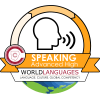 |
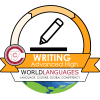 |
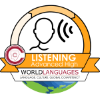 |
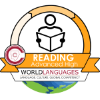 |
Culture
The study of culture and language is strongly interconnected. Students use the language to investigate and interact properly with the practices, perspectives, and products of the various cultures.
| LEVELS | |||
| Novice |  |
 |
 |
| Intermediate |  |
 |
 |
| Advanced |  |
 |
 |
For more information and resources about language proficiency go to the American Council for Teachers of Foreign Languages (ACTFL) at: https://www.actfl.org/
Communication
To share or exchange information, news, or ideas effectively in more than one language in order to function in a variety of situations and for multiple purposes.
 Interpretive Communication
Interpretive Communication
Learners understand, interpret, and analyze what is heard, read, or viewed on a variety of topics.
| Click the icons below to download the Interpretive Communication Self-Assessment Checklists. | Click the icons below to see the proficiency guidelines for each level. | ||
| Interpretive Listening |
Novice |
Intermediate | Advanced |
 |
 |
||
| Interpretive Reading | |||
 |
 |
 |
|
American Council of Teaching of Foreign Languages (ACTFL)
- Details
- Category: Language Proficiency
- Hits: 3724
The language proficiency targets indicate what students are expected to do with the language at the end of each course in terms of producing language (speaking and writing), understanding language (listening and reading), and interacting with others in the language. Proficiency targets for each language are based on the American Council on the Teaching of Foreign Languages (ACTFL) Proficiency Guidelines.
Click on each of the headings for details on the target skills for each level.
Level |
|
|
|
|
|
Level I |
Novice Low |
Novice Mid |
Novice Low |
Novice Mid |
Novice Low |
Level II |
Novice Mid |
Novice Mid (+) |
Novice Mid |
Novice Mid (+) |
Novice Mid |
Level III |
Novice Mid (+) |
Novice High |
Novice Mid (+) |
Novice High |
Novice Mid (+) |
Level IV |
Novice High |
Intermediate Low |
Novice High |
Intermediate Low |
Novice High |
Level V - VIII |
Intermediate Low (-) to Intermediate High (-) |
Intermediate Mid (-) to Intermediate High |
Intermediate Low (-) to Intermediate High (-) |
Intermediate Mid (-) to Intermediate High |
Intermediate Low (-) to Intermediate High (-) |
- Details
- Category: Language Proficiency
- Hits: 5104
The language proficiency targets indicate what students are expected to do with the language at the end of each course in terms of producing language (Expresive and Glossing), understanding language (Receptive and Finger Spelling), and interacting with others in the language. Proficiency targets for each language are based on the American Council on the Teaching of Foreign Languages (ACTFL) Proficiency Guidelines.
Click on each of the headings for details on the target skills for each level.
Level |
Interpersonal
|
Presentational
|
Presentational
|
Interpretive |
Interpretive
|
Level I |
Novice Mid |
Novice Mid |
Novice Low |
Novice High |
Novice Mid |
Level II |
Novice High |
Novice High |
Novice Mid |
Intermediate Low |
Novice High |
Level III |
Intermediate Low (-) |
Intermediate Low (-) |
Novice High |
Intermediate Mid (-) |
Intermediate Low (-) |
Level IV |
Intermediate Low |
Intermediate Low |
Intermediate Low |
Intermediate Mid |
Intermediate Low |
Level V - VIII |
Intermediate Mid to Advanced Low |
Intermediate Mid to Advanced Low |
Intermediate Mid to Advanced Low |
Intermediate High (-) to Advanced Low |
Intermediate Mid to Advanced Low |
- Details
- Category: Language Proficiency
- Hits: 4090
The language proficiency targets indicate what students are expected to do with the language at the end of each course in terms of producing language (speaking and writing), understanding language (listening and reading), and interacting with others in the language. Proficiency targets for each language are based on the American Council on the Teaching of Foreign Languages (ACTFL) Proficiency Guidelines.
Click on each of the headings for details on the target skills for each level.
Level |
|
|
|
|
|
Level I |
Novice Low |
Novice Mid |
Novice Low |
Novice Mid |
Novice Low |
Level II |
Novice Mid |
Novice Mid (+) |
Novice Mid |
Novice Mid (+) |
Novice Mid |
Level III |
Novice Mid (+) |
Novice High |
Novice Mid (+) |
Novice High |
Novice Mid (+) |
Level IV |
Novice High |
Intermediate Low |
Novice High |
Intermediate Low |
Novice High |
Level V - VIII |
Intermediate Low (-) to Intermediate High (-) |
Intermediate Mid (-) to Intermediate High |
Intermediate Low (-) to Intermediate High (-) |
Intermediate Mid (-) to Intermediate High |
Intermediate Low (-) to Intermediate High (-) |
- Details
- Category: Language Proficiency
- Hits: 5019
The language proficiency targets indicate what students are expected to do with the language at the end of each course in terms of producing language (speaking and writing), understanding language (listening and reading), and interacting with others in the language. Proficiency targets for each language are based on the American Council on the Teaching of Foreign Languages (ACTFL) Proficiency Guidelines.
Click on each of the headings for details on the target skills for each level.
|
Level |
||||||
|
7th Grade |
Novice Mid |
Novice Mid |
Novice Mid |
Novice Mid |
Novice High |
Novice |
|
Level I |
Novice High |
Novice High |
Novice High |
Novice High |
Intermediate Low |
Novice |
|
Level II |
Intermediate Low |
Intermediate Low |
Intermediate Low |
Intermediate Low |
Intermediate Mid (-) |
Intermediate (-) |
|
Level III |
Intermediate Mid (-) |
Intermediate Mid (-) |
Intermediate Mid (-) |
Intermediate Mid (-) |
Intermediate Mid |
Intermediate (-) |
|
Level IV |
Intermediate Mid |
Intermediate Mid |
Intermediate Mid |
Intermediate Mid |
Intermediate |
Intermediate |
|
Level V - VIII |
Intermediate High (-) to Advanced Low |
Intermediate High (-) to Advanced Low |
Intermediate High (-) to Advanced Low |
Intermediate High (-) to Advanced Low |
Intermediate High to Advanced Low |
Advanced |
Learn more about ACTFL's Language Proficiency Guidelines and the NCSSFL-ACTFL Global CAN-DO Benchmark Statements.
- Details
- Category: Language Proficiency
- Hits: 5887
The language proficiency targets indicate what students are expected to do with the language at the end of each course in terms of producing language (speaking and writing), understanding language (listening and reading), and interacting with others in the language. Proficiency targets for each language are based on the American Council on the Teaching of Foreign Languages (ACTFL) Proficiency Guidelines.
Click on each of the headings for details on the target skills for each level.
Level |
|
|
|
|
|
Level I |
Novice High |
Novice High |
Novice High |
Novice High |
Intermediate Low |
Level II |
Intermediate Low |
Intermediate Low |
Intermediate Low |
Intermediate Low |
Intermediate Mid (-) |
Level III |
Intermediate Mid (-) |
Intermediate Mid (-) |
Intermediate Mid (-) |
Intermediate Mid (-) |
Intermediate Mid |
Level IV |
Intermediate Mid |
Intermediate Mid |
Intermediate Mid |
Intermediate Mid |
Intermediate High (-) |
Level V - VIII |
Intermediate High (-) to Advanced Low |
Intermediate High (-) to Advanced Low |
Intermediate High (-) to Advanced Low |
Intermediate High (-) to Advanced Low |
Intermediate High to Advanced Low |
Learn more about ACTFL's Language Proficiency Guidelines and the NCSSFL-ACTFL Global CAN-DO Benchmark Statements.
- Details
- Category: Language Proficiency
- Hits: 5451
The language proficiency targets indicate what students are expected to do with the language at the end of each course in terms of producing language (speaking and writing), understanding language (listening and reading), and interacting with others in the language. Proficiency targets for each language are based on the American Council on the Teaching of Foreign Languages (ACTFL) Proficiency Guidelines.
Click on each of the headings for details on the target skills for each level.
Level |
|
|
|
|
|
Level I |
Novice Low |
Novice Mid |
Novice Low |
Novice Mid |
Novice Low |
Level II |
Novice Mid |
Novice Mid (+) |
Novice Mid |
Novice Mid (+) |
Novice Mid |
Level III |
Novice Mid (+) |
Novice High |
Novice Mid (+) |
Novice High |
Novice Mid (+) |
Level IV |
Novice High |
Intermediate Low |
Novice High |
Intermediate Low |
Novice High |
Level V - VIII |
Intermediate Low (-) to Intermediate High (-) |
Intermediate Mid (-) to Intermediate High |
Intermediate Low (-) to Intermediate High (-) |
Intermediate Mid (-) to Intermediate High |
Intermediate Low (-) to Intermediate High (-) |
- Details
- Category: Language Proficiency
- Hits: 4428
The language proficiency targets indicate what students are expected to do with the language at the end of each course in terms of producing language (speaking and writing), understanding language (listening and reading), and interacting with others in the language. Proficiency targets for each language are based on the American Council on the Teaching of Foreign Languages (ACTFL) Proficiency Guidelines.
Click on each of the headings for details on the target skills for each level.
Level |
|
|
|
|
|
Level I |
Novice High |
Novice High |
Novice High |
Novice High |
Intermediate Low |
Level II |
Intermediate Low |
Intermediate Low |
Intermediate Low |
Intermediate Low |
Intermediate Mid (-) |
Level III |
Intermediate Mid (-) |
Intermediate Mid (-) |
Intermediate Mid (-) |
Intermediate Mid (-) |
Intermediate Mid |
Level IV |
Intermediate Mid |
Intermediate Mid |
Intermediate Mid |
Intermediate Mid |
Intermediate High (-) |
Level V - VIII |
Intermediate High (-) to Advanced Low |
Intermediate High (-) to Advanced Low |
Intermediate High (-) to Advanced Low |
Intermediate High (-) to Advanced Low |
Intermediate High to Advanced Low |
Learn more about ACTFL's Language Proficiency Guidelines and the NCSSFL-ACTFL Global CAN-DO Benchmark Statements.
- Details
- Category: Language Proficiency
- Hits: 4195
The language proficiency targets indicate what students are expected to do with the language at the end of each course in terms of producing language (speaking and writing), understanding language (listening and reading), and interacting with others in the language. Proficiency targets for each language are based on the American Council on the Teaching of Foreign Languages (ACTFL) Proficiency Guidelines.
Click on each of the headings for details on the target skills for each level.
|
Level |
||||||
| K-5th Grade DLI - Bilingual |
Intermediate Mid |
Intermediate Mid |
Intermediate Mid |
Intermediate High |
Intermediate Mid |
Intermediate (-) |
|
6th Grade |
Novice Low |
Novice Low |
Novice Low |
Novice Low |
Novice Mid |
Novice |
|
7th Grade |
Novice Mid |
Novice Mid |
Novice Mid |
Novice Mid |
Novice High |
Novice |
|
Level I |
Novice High |
Novice High |
Novice High |
Novice High |
Intermediate Low |
Novice |
|
Level II |
Intermediate Low |
Intermediate Low |
Intermediate Low |
Intermediate Low |
Intermediate Mid (-) |
Intermediate (-) |
|
Level III |
Intermediate Mid (-) |
Intermediate Mid (-) |
Intermediate Mid (-) |
Intermediate Mid (-) |
Intermediate Mid |
Intermediate (-) |
|
Level IV |
Intermediate Mid |
Intermediate Mid |
Intermediate Mid |
Intermediate Mid |
Intermediate |
Intermediate |
|
Level V - VIII |
Intermediate High (-) to Advanced Low |
Intermediate High (-) to Advanced Low |
Intermediate High (-) to Advanced Low |
Intermediate High (-) to Advanced Low |
Intermediate High to Advanced Low |
Advanced |
|
Native Speakers I |
Intermediate High (-) |
Intermediate High (-) |
Intermediate Low |
Intermediate High |
Intermediate Low |
Intermediate (-) |
|
Native Speakers II |
Advanced Low (-) | Advanced Low (-) | Intermediate High (-) |
Advanced Low (-) | Intermediate High (-) |
Intermediate |
|
Native Speakers III |
Advanced Low | Advanced Low | Intermediate High |
Advanced Low | Intermediate High |
Advanced (-) |
Learn more about ACTFL's Language Proficiency Guidelines and the NCSSFL-ACTFL Global CAN-DO Benchmark Statements.
- Details
- Category: Language Proficiency
- Hits: 8753
At the Advanced level, listeners can understand the main ideas and most supporting details in connected discourse on a variety of general interest topics, such as news stories, explanations, instructions, anecdotes, or travelogue descriptions. Listeners are able to compensate for limitations in their lexical and structural control of the language by using real-world knowledge and contextual clues. Listeners may also derive some meaning from oral texts at higher levels if they possess significant familiarity with the topic or context.
Advanced-level listeners understand speech that is authentic and connected. This speech is lexically and structurally uncomplicated. The discourse is straightforward and is generally organized in a clear and predictable way
Advanced-level listeners demonstrate the ability to comprehend language on a range of topics of general interest. They have sufficient knowledge of language structure to understand basic time-frame references. Nevertheless, their understanding is most often limited to concrete, conventional discourse.
 Advanced High
Advanced High
At the Advanced High sublevel, listeners are able to understand, with ease and confidence, conventional narrative and descriptive texts of any length as well as complex factual material such as summaries or reports. They are typically able to follow some of the essential points of more complex or argumentative speech in areas of special interest or knowledge. In addition, they are able to derive some meaning from oral texts that deal with unfamiliar topics or situations. At the Advanced High sublevel, listeners are able to comprehend the facts presented in oral discourse and are often able to recognize speaker-intended inferences. Nevertheless, there are likely to be gaps in comprehension of complex texts dealing with issues treated abstractly that are typically understood by Superior-level listeners.
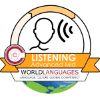 Advanced Mid
Advanced Mid
At the Advanced Mid sublevel, listeners are able to understand conventional narrative and descriptive texts, such as expanded descriptions of persons, places, and things, and narrations about past, present, and future events. The speech is predominantly in familiar target-language patterns. Listeners understand the main facts and many supporting details. Comprehension derives not only from situational and subject-matter knowledge, but also from an increasing overall facility with the language itself.
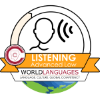 Advanced Low
Advanced Low
At the Advanced Low sublevel, listeners are able to understand short conventional narrative and descriptive texts with a clear underlying structure though their comprehension may be uneven. The listener understands the main facts and some supporting details. Comprehension may often derive primarily from situational and subject-matter knowledge.
For additional information go to
ACTFL PROFICIENCY GUIDELINES 2012
- Details
- Category: Language Proficiency
- Hits: 9133
At the Intermediate level, listeners can understand information conveyed in simple, sentence-length speech on familiar or everyday topics. They are generally able to comprehend one utterance at a time while engaged in face-to-face conversations or in routine listening tasks such as understanding highly contextualized messages, straightforward announcements, or simple instructions and directions. Listeners rely heavily on redundancy, restatement, paraphrasing, and contextual clues.
Intermediate-level listeners understand speech that conveys basic information. This speech is simple, minimally connected, and contains high-frequency vocabulary.
Intermediate-level listeners are most accurate in their comprehension when getting meaning from simple, straightforward speech. They are able to comprehend messages found in highly familiar everyday contexts. Intermediate listeners require a controlled listening environment where they hear what they may expect to hear.
 Intermediate High
Intermediate High
At the Intermediate High sublevel, listeners are able to understand, with ease and confidence, simple sentence-length speech in basic personal and social contexts. They can derive substantial meaning from some connected texts typically understood by Advanced-level listeners although there often will be gaps in understanding due to a limited knowledge of the vocabulary and structures of the spoken language.
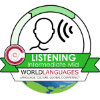 Intermediate Mid
Intermediate Mid
At the Intermediate Mid sublevel, listeners are able to understand simple, sentence-length speech, one utterance at a time, in a variety of basic personal and social contexts. Comprehension is most often accurate with highly familiar and predictable topics although a few misunderstandings may occur. Intermediate Mid listeners may get some meaning from oral texts typically understood by Advanced-level listeners.
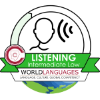 Intermediate Low
Intermediate Low
At the Intermediate Low sublevel, listeners are able to understand some information from sentence-length speech, one utterance at a time, in basic personal and social contexts, though comprehension is often uneven. At the Intermediate Low sublevel, listeners show little or no comprehension of oral texts typically understood by Advanced-level listeners.
For additional information go to
ACTFL PROFICIENCY GUIDELINES 2012
- Details
- Category: Language Proficiency
- Hits: 9273
At the Novice level, listeners can understand key words, true aural cognates, and formulaic expressions that are highly contextualized and highly predictable, such as those found in introductions and basic courtesies.
Novice-level listeners understand words and phrases from simple questions, statements, and high-frequency commands. They typically require repetition, rephrasing, and/or a slowed rate of speech for comprehension. They rely heavily on extralinguistic support to derive meaning.
Novice-level listeners are most accurate when they are able to recognize speech that they can anticipate. In this way, these listeners tend to recognize rather than truly comprehend. Their listening is largely dependent on factors other than the message itself.
 Novice High
Novice High
At the Novice High sublevel, listeners are often but not always able to understand information from sentence-length speech, one utterance at a time, in basic personal and social contexts where there is contextual or extralinguistic support, though comprehension may often be very uneven. They are able to understand speech dealing with areas of practical need such as highly standardized messages, phrases, or instructions, if the vocabulary has been learned.
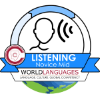 Novice Mid
Novice Mid
At the Novice Mid sublevel, listeners can recognize and begin to understand a number of high-frequency, highly contextualized words and phrases including aural cognates and borrowed words. Typically, they understand little more than one phrase at a time, and repetition may be required.
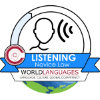 Novice Low
Novice Low
At the Novice Low sublevel, listeners are able occasionally to recognize isolated words or very high-frequency phrases when those are strongly supported by context. These listeners show virtually no comprehension of any kind of spoken message, not even within the most basic personal and social contexts.
For additional information go to
ACTFL PROFICIENCY GUIDELINES 2012
- Details
- Category: Language Proficiency
- Hits: 9567
Communication
To share or exchange information, news, or ideas effectively in more than one language in order to function in a variety of situations and for multiple purposes.
 Presentational Communication
Presentational Communication
Learners present information, concepts, and ideas to inform, explain, persuade, and narrate on a variety of topics using appropriate media and adapting to various audiences of listeners, readers, or viewers.
| Click the icons below to download the Presentational Communication Self-Assessment Checklists. | Click the icons below to see the proficiency guidelines for each level. | ||
| Presentational Speaking |
Novice |
Intermediate | Advanced |
 |
 |
||
| Presentational Writing | |||
 |
 |
 |
|
American Council of Teaching of Foreign Languages (ACTFL)
- Details
- Category: Language Proficiency
- Hits: 4124
Visual representations are a great tool to help students understand the progressive nature of language learning and the various levels they will reach in the process. The example below uses a road analogy with road markers to represent the various milestones (Inspired by Path to Proficiecy by Advanced Learning). Each marker's QR code will take students to the corresponding proficiency level Can-Do-Statement example self-assessment checklist.
Click HERE to download the image below in poster size.
Proficiency Journey Trail
- Details
- Category: Language Proficiency
- Hits: 8459
At the Advanced level, readers can understand the main idea and supporting details of authentic narrative and descriptive texts. Readers are able to compensate for limitations in their lexical and structural knowledge by using contextual clues. Comprehension is likewise supported by knowledge of the conventions of the language (e.g., noun/adjective agreement, verb placement, etc.). When familiar with the subject matter, Advanced-level readers are also able to derive some meaning from straightforward argumentative texts (e.g., recognizing the main argument).
Advanced-level readers are able to understand texts that have a clear and predictable structure. For the most part, the prose is uncomplicated and the subject matter pertains to real-world topics of general interest.
Advanced-level readers demonstrate an independence in their ability to read subject matter that is new to them. They have sufficient control of standard linguistic conventions to understand sequencing, time frames, and chronology. However, these readers are likely challenged by texts in which issues are treated abstractly.
 Advanced High
Advanced High
At the Advanced High sublevel, readers are able to understand, fully and with ease, conventional narrative and descriptive texts of any length as well as more complex factual material. They are able to follow some of the essential points of argumentative texts in areas of special interest or knowledge. In addition, they are able to understand parts of texts that deal with unfamiliar topics or situations. These readers are able to go beyond comprehension of the facts in a text, and to begin to recognize author-intended inferences. An emerging awareness of the aesthetic properties of language and of its literary styles permits comprehension of a wide variety of texts. Misunderstandings may occur when reading texts that are structurally and/or conceptually more complex.
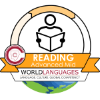 Advanced Mid
Advanced Mid
At the Advanced Mid sublevel, readers are able to understand conventional narrative and descriptive texts, such as expanded descriptions of persons, places, and things and narrations about past, present, and future events. These texts reflect the standard linguistic conventions of the written form of the language in such a way that readers can predict what they are going to read. Readers understand the main ideas, facts, and many supporting details. Comprehension derives not only from situational and subject-matter knowledge but also from knowledge of the language itself. Readers at this level may derive some meaning from texts that are structurally and/or conceptually more complex.
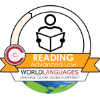 Advanced Low
Advanced Low
At the Advanced Low sublevel, readers are able to understand conventional narrative and descriptive texts with a clear underlying structure though their comprehension may be uneven. These texts predominantly contain high-frequency vocabulary and structures. Readers understand the main ideas and some supporting details. Comprehension may often derive primarily from situational and subject-matter knowledge. Readers at this level will be challenged to comprehend more complex texts.
For additional information go to
ACTFL PROFICIENCY GUIDELINES 2012
- Details
- Category: Language Proficiency
- Hits: 8821
Page 2 of 3















